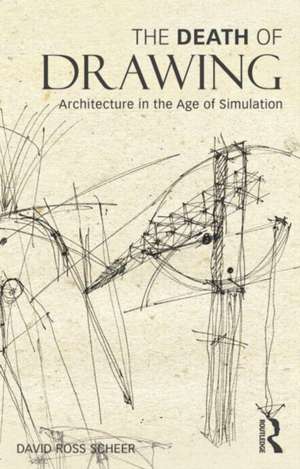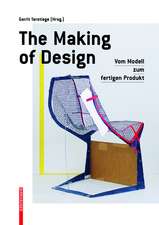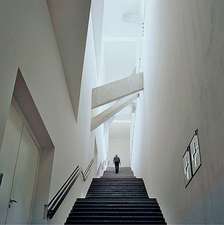The Death of Drawing: Architecture in the Age of Simulation
Autor David Scheeren Limba Engleză Paperback – 5 aug 2014
The author explores many ways in which this displacement is affecting architecture: the dominance of performance criteria in the evaluation of design decisions; the blurring of the separation of design and construction; the undermining of architects’ authority over their projects by automated information sharing; the elimination of the human body as the common foundation of design and experience; the transformation of the meaning of geometry when it is performed by computers; the changing nature of design when it requires computation or is done by a digitally-enabled collaboration. Throughout the book, Scheer examines both the theoretical bases and the practical consequences of these changes. The Death of Drawing is a clear-eyed account of the reasons for and consequences of the displacement of drawing by computational media in architecture. Its aim is to give architects the ability to assess the impact of digital media on their own work and to see both the challenges and opportunities of this historic moment in the history of their discipline.
| Toate formatele și edițiile | Preț | Express |
|---|---|---|
| Paperback (1) | 445.60 lei 6-8 săpt. | |
| Taylor & Francis – 5 aug 2014 | 445.60 lei 6-8 săpt. | |
| Hardback (1) | 1288.10 lei 6-8 săpt. | |
| Taylor & Francis – 5 aug 2014 | 1288.10 lei 6-8 săpt. |
Preț: 445.60 lei
Nou
Puncte Express: 668
Preț estimativ în valută:
85.27€ • 91.18$ • 71.09£
85.27€ • 91.18$ • 71.09£
Carte tipărită la comandă
Livrare economică 17 aprilie-01 mai
Preluare comenzi: 021 569.72.76
Specificații
ISBN-13: 9780415834964
ISBN-10: 0415834961
Pagini: 258
Ilustrații: 136 black & white illustrations
Dimensiuni: 138 x 216 x 13 mm
Greutate: 0.36 kg
Ediția:New.
Editura: Taylor & Francis
Colecția Routledge
Locul publicării:Oxford, United Kingdom
ISBN-10: 0415834961
Pagini: 258
Ilustrații: 136 black & white illustrations
Dimensiuni: 138 x 216 x 13 mm
Greutate: 0.36 kg
Ediția:New.
Editura: Taylor & Francis
Colecția Routledge
Locul publicării:Oxford, United Kingdom
Public țintă
Postgraduate, Professional, and UndergraduateCuprins
Introduction; Chapter One: Representation and Simulation Chapter Two: Drawing and Architecture Chapter Three: Building Information Modeling Chapter Four: Computational Design Chapter Five: Simulation and Architecture Chapter Six: Simulation and Ideation Postscript.
Recenzii
This is a significant book at the time of widespread uncertainty and confusion in architectural theory, education and practice. - Juhani Pallasmaa, architect and author of The Eyes of the Skin
In this timely and important study, David Scheer offers a lucid analysis of a dramatic, unprecedented, epistemological shift in architecture and its production. - Michael Sorkin, architecture critic, Distinguished Professor of Architecture and Director of the Graduate Program in Urban Design, City College of New York
David Scheer offers a clear and unvarnished assessment of what architects have to lose and gain as we move from representative to simulated experiences, from controlling to collaborative practices, and from Euclidean to parametric/algorithmic form-making. - Thomas Fisher, author of Designing to Avoid Disaster, professor of architecture and the Dean of the College of Design, University of Minnesota
David Scheer's important book on the role of drawing in the digital and virtual age reminds us that the actual relationship between the hand and the mind is neither casual nor expendable. - Renata Hejduk, Assistant Professor of Architectural History and Theory in the School of Architecture, Arizona State University
As an architect and educator, engaged in professional debates in the United States, David Ross Scheer is a credible writer on contemporary architectural practice. The discussion is well grounded and contextualized within architectural history and it is timely, given substantial policy and commercial incentives for better information management through building life cycles. - Jennifer Whyte, University of Reading, UK
If one wants to know what is going on in the profession and schools of architecture, this book is a must read… Scheer says we need to understand the myriad tools available to us, but be smart enough to lead with design rather than performance. – Sophia A. Gruzdys, Architectural Record
No question: Scheer is an ideas junkie and has done his homework. In the book you will find Immanuel Kant’s theories on knowledge and beauty mixed with practical details and the theoretical foundations of CD and BIM simulations. If you believe ideas shape the expectations of what is seen, and that seeing the novel and universal is a desired outcome for designers of great buildings, this is a matchup you will want to follow and a book to read. – J. Michael Redd, 15 bytes
In this timely and important study, David Scheer offers a lucid analysis of a dramatic, unprecedented, epistemological shift in architecture and its production. - Michael Sorkin, architecture critic, Distinguished Professor of Architecture and Director of the Graduate Program in Urban Design, City College of New York
David Scheer offers a clear and unvarnished assessment of what architects have to lose and gain as we move from representative to simulated experiences, from controlling to collaborative practices, and from Euclidean to parametric/algorithmic form-making. - Thomas Fisher, author of Designing to Avoid Disaster, professor of architecture and the Dean of the College of Design, University of Minnesota
David Scheer's important book on the role of drawing in the digital and virtual age reminds us that the actual relationship between the hand and the mind is neither casual nor expendable. - Renata Hejduk, Assistant Professor of Architectural History and Theory in the School of Architecture, Arizona State University
As an architect and educator, engaged in professional debates in the United States, David Ross Scheer is a credible writer on contemporary architectural practice. The discussion is well grounded and contextualized within architectural history and it is timely, given substantial policy and commercial incentives for better information management through building life cycles. - Jennifer Whyte, University of Reading, UK
If one wants to know what is going on in the profession and schools of architecture, this book is a must read… Scheer says we need to understand the myriad tools available to us, but be smart enough to lead with design rather than performance. – Sophia A. Gruzdys, Architectural Record
No question: Scheer is an ideas junkie and has done his homework. In the book you will find Immanuel Kant’s theories on knowledge and beauty mixed with practical details and the theoretical foundations of CD and BIM simulations. If you believe ideas shape the expectations of what is seen, and that seeing the novel and universal is a desired outcome for designers of great buildings, this is a matchup you will want to follow and a book to read. – J. Michael Redd, 15 bytes
Notă biografică
David Ross Scheer received his Master of Architecture degree from Yale University in 1984. He brings a broad background in practice, teaching and research to his thinking about the effects of digital technologies on architecture. He has taught architectural design, history and theory at several schools of architecture around the U.S. and has lectured and written extensively on building information modeling (BIM). He has explored the uses of BIM and other digital technologies in his practice for nearly twenty years. As a longstanding member of the advisory group of the AIA Technology in Architectural Practice Knowledge Community (and its Chair in 2012), Mr. Scheer has gained a broad awareness of the evolving uses and effects of BIM and computation throughout the building industry.
Descriere
The Death of Drawing explains how the shift from drawing by to hand to using building information models (BIM) is happening and the effect of this on how architects think and work.




